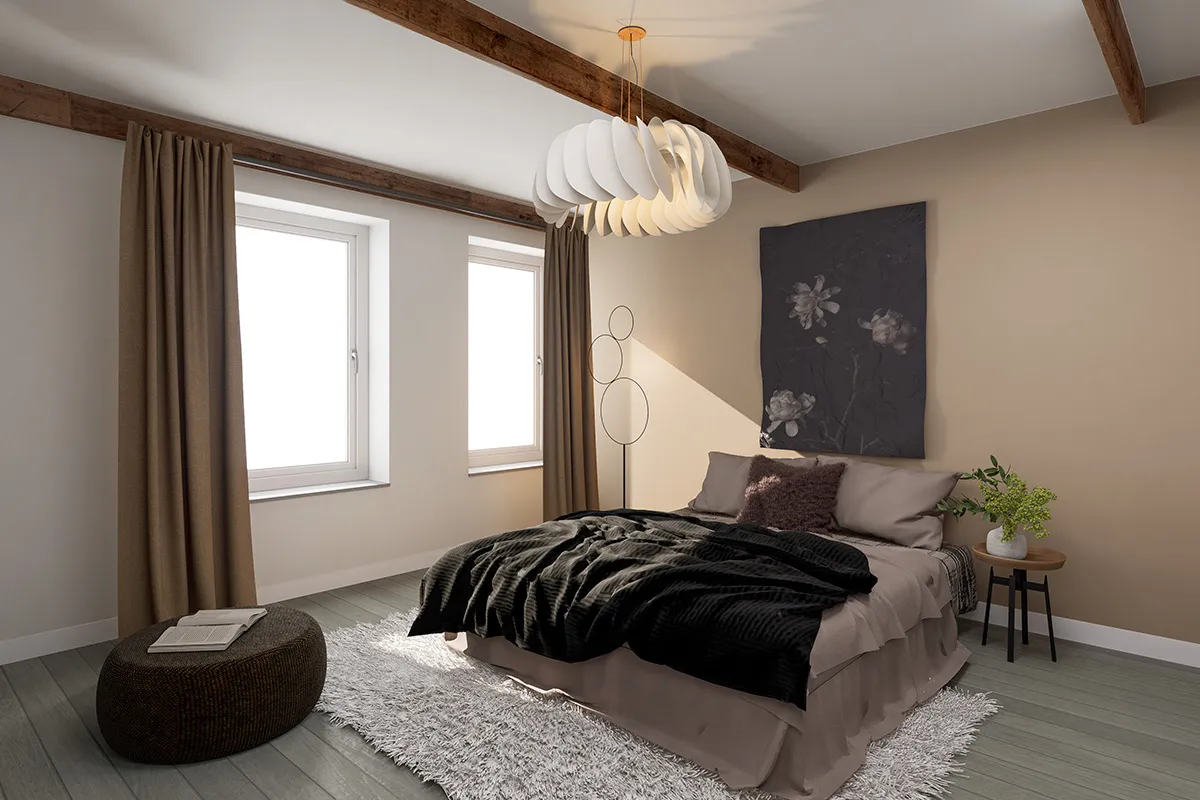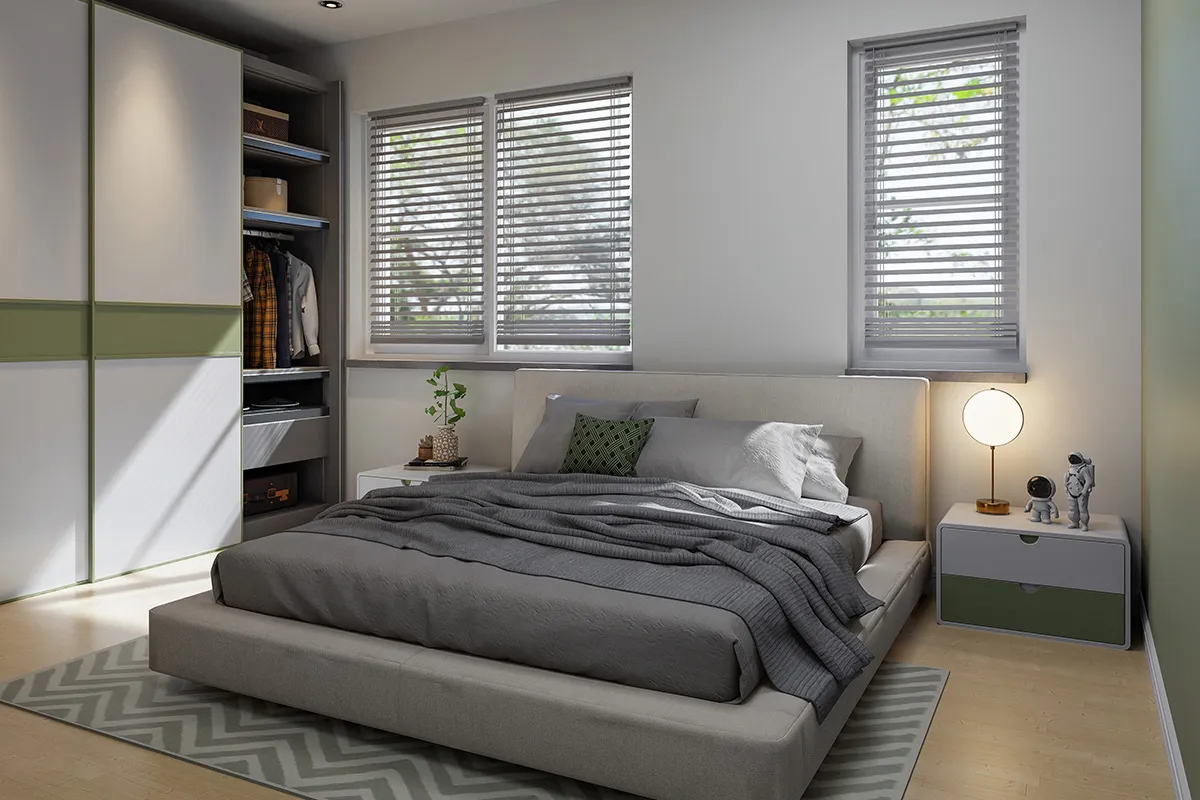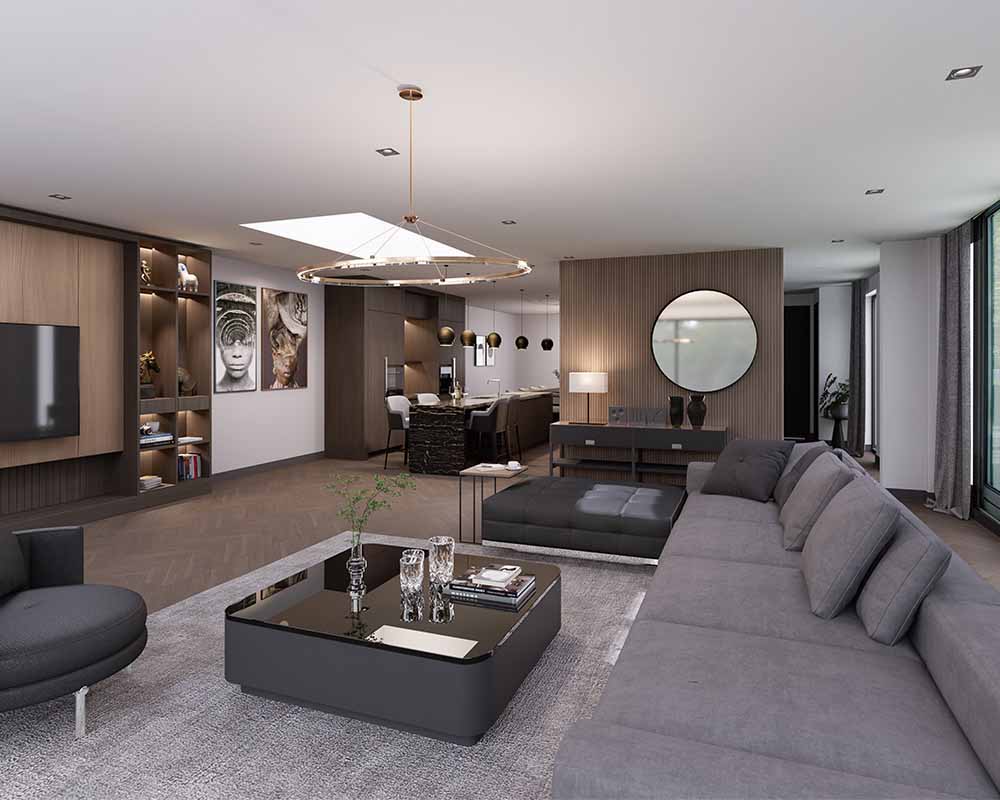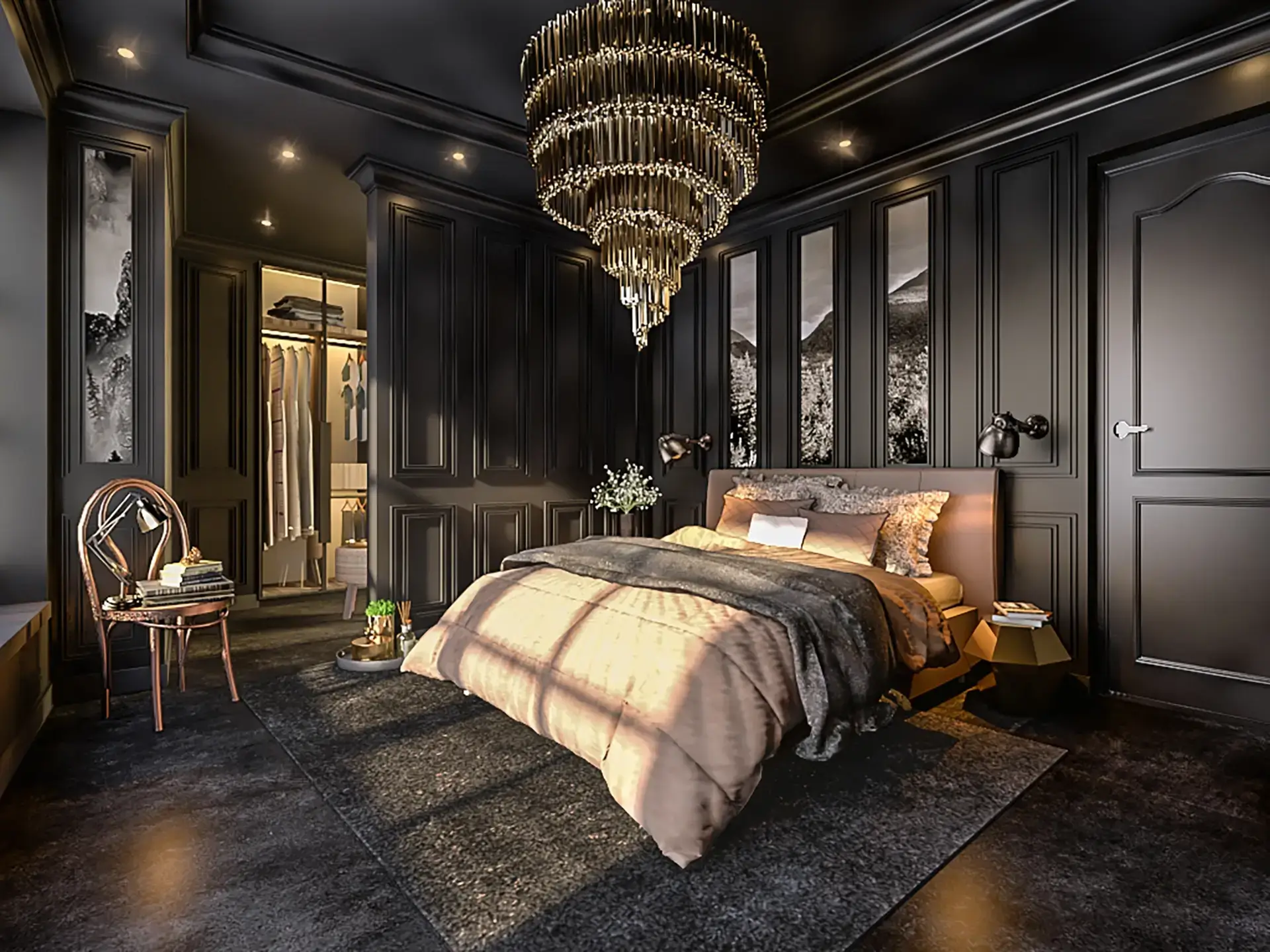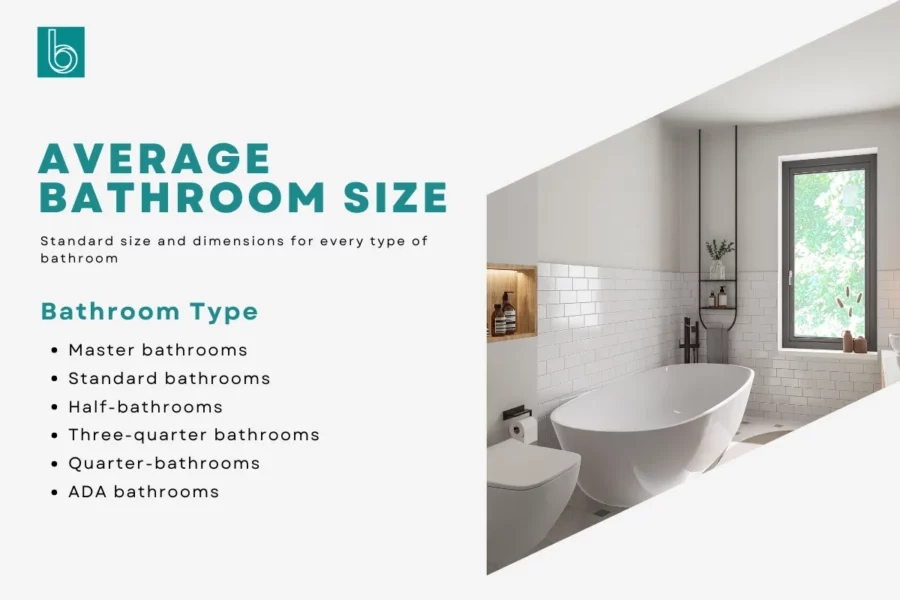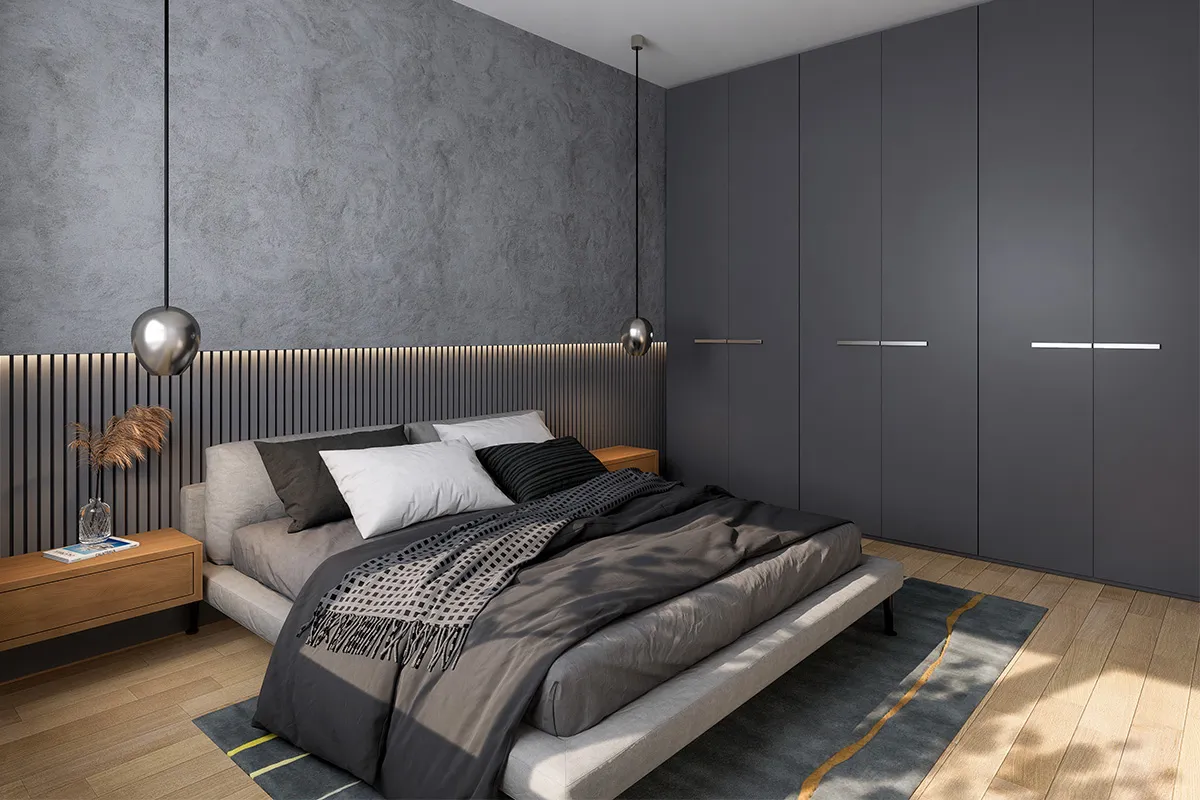
Choosing the right size for your master bedroom also known as primary bedroom or main bedroom is essential for creating a comfortable and functional living space tailored to your needs.
In this blog, we explore all you need to understand about typical master bedroom sizes, why it’s important, what to think about when picking bedroom dimensions, comparisons of master bedroom sizes with bathrooms, and walk-in closets, tricks to make your bedroom seem larger and more appealing and tips on picking the ideal size based on your lifestyle, tastes and better.
What do you need to know about the average master bedroom size?
Understanding the average size of a master bedroom is crucial when planning your living space. Typically, a master bedroom spans around 14 feet by 16 feet, offering up to 224 square feet of room.
This space comfortably accommodates a king-size bed, the focal point of most bedrooms. Alongside the bed, there’s room for essential furnishings like dressers, nightstands, and even a TV stand.
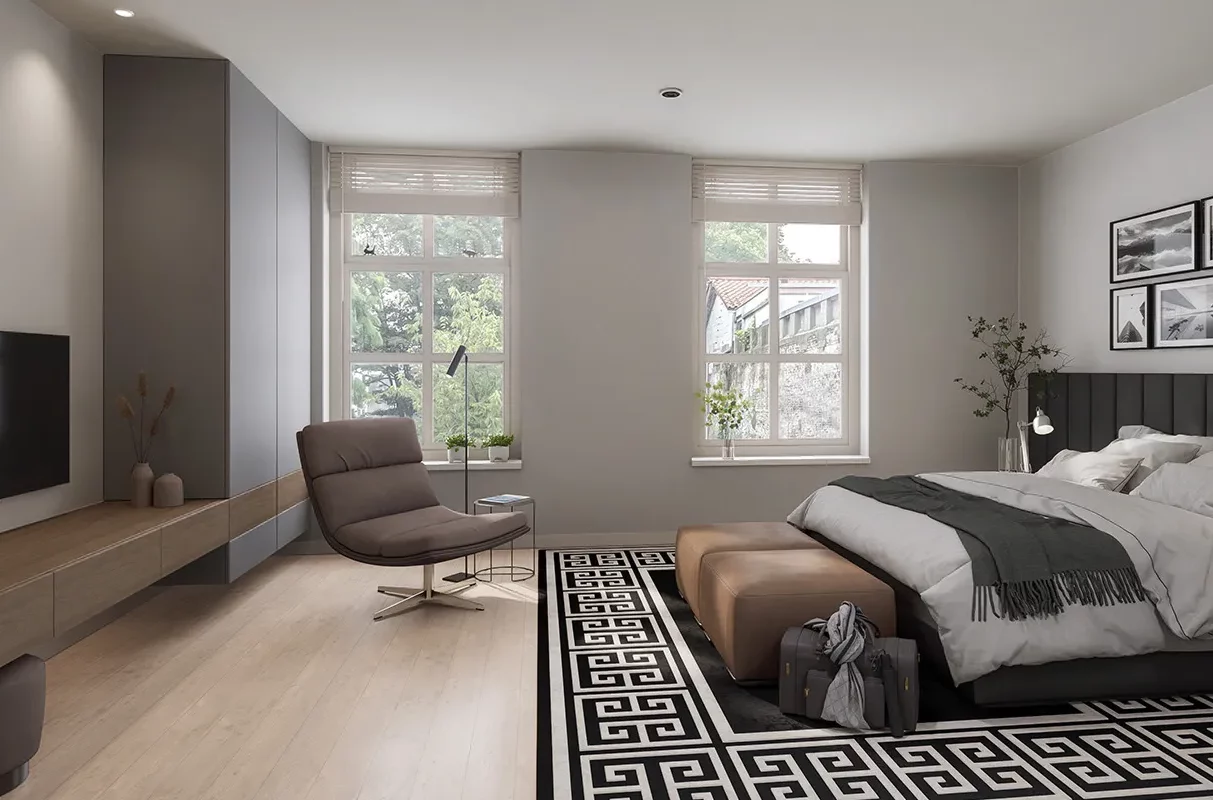
If you want, you can create a cozy spot with a couple of chairs for reading or relaxation. However, primary bedroom sizes can vary based on the type of home. Standard homes often range from 200 to 350 square feet, while smaller homes might be around 200 square feet.
Whereas, larger and luxury homes have primary bedrooms exceeding 350 square feet, with some luxury homes even reaching 600 square feet or more.
Whether you’re aiming for a comforting retreat or a spacious sanctuary, join us as we navigate through the key considerations to help you design your dream master bedroom.
Master bedroom Size breakdown
Average Master Bedroom Size with Bathroom and Walk-in Closet:
- In the United States, the average size of a master bedroom with an attached bathroom and walk-in closet ranges from 250 to 400 square feet in newer construction homes.
- In larger homes or luxury properties, this size can exceed 500 squares.
Average Size of a Master Bedroom and Bathroom:
- A master bedroom with an attached bathroom but without a walk-in closet typically ranges from 200 to 350 square feet.
- The size of the attached bathroom can vary significantly, but it usually occupies around 35 to 100 square feet, depending on the design and layout.
Statistics on Average Master Bedroom Sizes in Different Countries or Regions:
- In the UK, the average size of a master bedroom is around 150 to 250 square feet, with variations based on the age and style of the property.
- In Australia, master bedroom sizes tend to be larger, ranging from 200 to 300 square feet in newer homes.
- In Asian countries like Japan and South Korea, where space is often at a premium, master bedroom sizes are typically smaller, averaging around 100 to 200 square feet.
Comparison of Master Bedroom Sizes in square feet in Different Home Types:
- Condominiums or apartments: Master bedrooms in these types of dwellings usually range from 100 to 200 square feet, with limited space for walk-in closets.
- Single-family homes: Master bedrooms in single-family homes can vary widely in size depending on the overall square footage of the house, ranging from 150 to 400 square feet
- Luxury estates: In larger, high-end properties, master bedrooms can exceed 500 square feet and may feature elaborate ensuite bathrooms and expansive walk-in closets.
Why does the primary bedroom size matter?
The size of the primary bedroom matters for homeowners, home builders, and home designers for several reasons, particularly in modern home design and living arrangements. Here’s why:
- Space for Relaxation and Retreat: The master bedroom is often considered a relaxing sanctuary within the home, a space where homeowners can retreat from the activities of daily life and find relaxation. A larger master bedroom provides ample space for comfortable seating areas, reading spots, or even a small home office, allowing them to unwind and recharge without feeling cramped or confined.
- Storage and Organization: With two adults typically occupying the master bedroom, there’s a need for adequate storage space for clothing, accessories, and personal belongings. A larger master bedroom can accommodate larger closets, built-in storage solutions, or even walk-in closets, making it easier to keep the space organized and clutter-free.
- Privacy and Personal Space: In a household with multiple occupants, having a spacious master bedroom provides a sense of privacy and personal space for the adults who occupy it. Whether it’s enjoying quiet time alone or simply having enough space to move around without feeling crowded, the size of the master bedroom contributes to the overall comfort and well-being of its occupants.
- En-suite Amenities: Lots of new master bedrooms have their bathrooms, which make life more convenient and luxurious. When the bedroom is bigger, the bathroom can be too, with cool stuff like double sinks, big tubs, or separate showers. This makes daily life more enjoyable and encourages relaxation and taking care of yourself.
- Flexibility in Design and Layout: A larger master bedroom provides greater flexibility in terms of design and layout options. Whether it’s incorporating additional furniture pieces, creating designated zones within the room, or experimenting with different decor styles, a spacious master bedroom allows for more creativity and customization to suit the preferences and lifestyle of its occupants.
Hence, the size of the master bedroom directly impacts daily living, relaxation, and overall well-being by providing a comfortable and functional space for its occupants to retreat, unwind, and recharge. From ample storage and privacy to en-suite amenities and design flexibility, a larger master bedroom enhances the quality of life within the home.
Factors to consider when choosing your master bedroom size
Factors to consider when choosing your master bedroom height and master bedroom width, basically the overall master bedroom size:
- Home Size: The size of your overall home can influence the size of your master bedroom. In a smaller home, a larger master bedroom might not be feasible without sacrificing space in other areas. Whereas, in a larger home, you may have more flexibility to create a spacious master bedroom retreat.
- Bed Size: The size of your bed is a crucial factor in determining the appropriate size for your main bedroom. Larger beds, such as king or California king size, will require more space to ensure comfortable movement around the room and to accommodate additional furniture pieces.
- Furniture Placement: Consider the placement of other essential bedroom furniture, such as dressers, nightstands, and seating areas. Adequate space around each piece of furniture is necessary for both functionality and aesthetic appeal.
- Future Needs: Anticipate any future needs or lifestyle changes that may impact the size requirements of your master bedroom. For example, if you plan to expand your family or incorporate a home office within the bedroom space, additional square footage may be necessary to accommodate these changes.
- Architectural Styles: Different architectural styles may lend themselves to varying bedroom sizes. For instance, in a modern minimalist home, smaller, more streamlined bedrooms might be preferred, while in a traditional or luxury home, larger master suites with space for relaxation and indulgence may be desirable.
- Geographical Location: Consider the geographical location of your home, as regional preferences and climate can influence bedroom size. In colder climates, larger bedrooms with space for relaxing seating areas or fireplace installations may be preferred for warmth and comfort, while in warmer climates, smaller, more open bedrooms with natural light and ventilation may be desirable.
- Homeowner Preferences: Ultimately, the preferences and lifestyle of the homeowners should guide the decision on master bedroom size. Some individuals may prioritize a spacious retreat for relaxation and entertainment, while others may prefer a more compact, intimate space for rest and solitude.
- Cost: Lastly, consider the cost implications of increasing or decreasing the size of your master bedroom. Larger bedrooms typically require more materials and furnishings, which can increase construction and decoration costs. Conversely, smaller bedrooms may offer cost savings in terms of construction and maintenance.
By thinking about these things carefully, homeowners can figure out the best size for their main bedroom, making a useful area that suits what they want.
Ways to make your master bedroom appear bigger and more attractive
When it comes to choosing the right size for your master bedroom, especially if it’s small, there are several strategies you can employ to create the illusion of more space.
- Utilize Vertical Space: In a small bedroom, think vertically. Use shelves, artwork, or tall headboards that draw the eye upward, making the room appear larger and more spacious. Built-in shelves or floor-to-ceiling storage maximize storage and visual space efficiently.
- Opt for Furniture with Legs: Choose furniture with legs to create an open and airy feel in the room. Elevating furniture pieces off the floor allows more of the floor and wall to show, giving the impression of a larger space. Midcentury modern-style furniture, often elevated on thin legs, is ideal for small rooms.
- Match Window Treatments to Walls: To maintain a cohesive and spacious look in a small bedroom, match your window treatments to the walls. This creates a seamless flow and prevents visual clutter, making the room feel more expansive.
- Maximize Natural Light: Natural light is your ally in making a small bedroom feel larger. Keep window treatments minimal or opt for thin drapes to allow maximum light into the room, creating a connection to the outdoors and enhancing the sense of space.
- Stick to Light Color Palettes: Lighter color palettes, such as soft neutrals or pastels, can visually expand a small bedroom. Whites, soft blues, greens, and purples create a sense of openness and airiness. Avoid heavy, dark colors that can make the room feel smaller and more cramped.
How to choose the right size for your master bedroom?
Choosing the right size for your master bedroom can be a daunting task. Here are some tips you can consider for choosing the right size for your master bedroom:
- Consider Your Lifestyle: Your daily activities and habits should guide the size of your master bedroom. If you often use it for entertaining guests, working from home, or pursuing hobbies that need space, a larger bedroom is essential to accommodate these needs effectively.
- Evaluate Furniture Requirements: The amount and size of furniture you plan to include in your bedroom will influence its size. Larger pieces like king-size beds and additional storage units will naturally demand more space. So, consider your furniture needs before deciding on the size of your bedroom.
- Reflect on Personal Style Preferences: Your style and vision for your bedroom are crucial. Some people prefer an intimate space, while others lean towards a more spacious environment. Your comfort zone, whether it’s filled with furniture or leaves space, should guide your decision.
- Account for Home Size: The overall dimensions of your home should be taken into consideration. In a smaller home, you might have limited options for bedroom size, while in a larger home, you have more freedom to choose a size that aligns with your preferences.
- Mind Your Budget: Your budget plays a significant role in determining the size of your bedroom. Larger bedrooms require more furniture and accessories, which can increase overall expenses. So, ensure that the chosen size fits within your budget constraints.
Visualize your dream master bedroom with Blinqlab Direct!
Looking for the perfect master bedroom size? Look no further! With Blinqlab Direct, we make it effortless for you to visualize and design your ideal space.
- Explore our tailored designs
From small homes to spacious luxury estates, we’ve crafted master bedroom designs to suit every style and space. - Experience the magic of 3d interior rendering
Our cutting-edge 3D interior rendering services bring your vision to life with stunning realism. Say goodbye to guesswork and hello to clarity!
- Dive into our portfolio
Check out our showcase of master bedroom designs, curated to inspire and delight. Find the perfect blend of comfort and elegance for your home.
- Witness the transformation
See the magic unfold with our before and after comparisons. Watch as your dream master bedroom takes shape before your eyes.

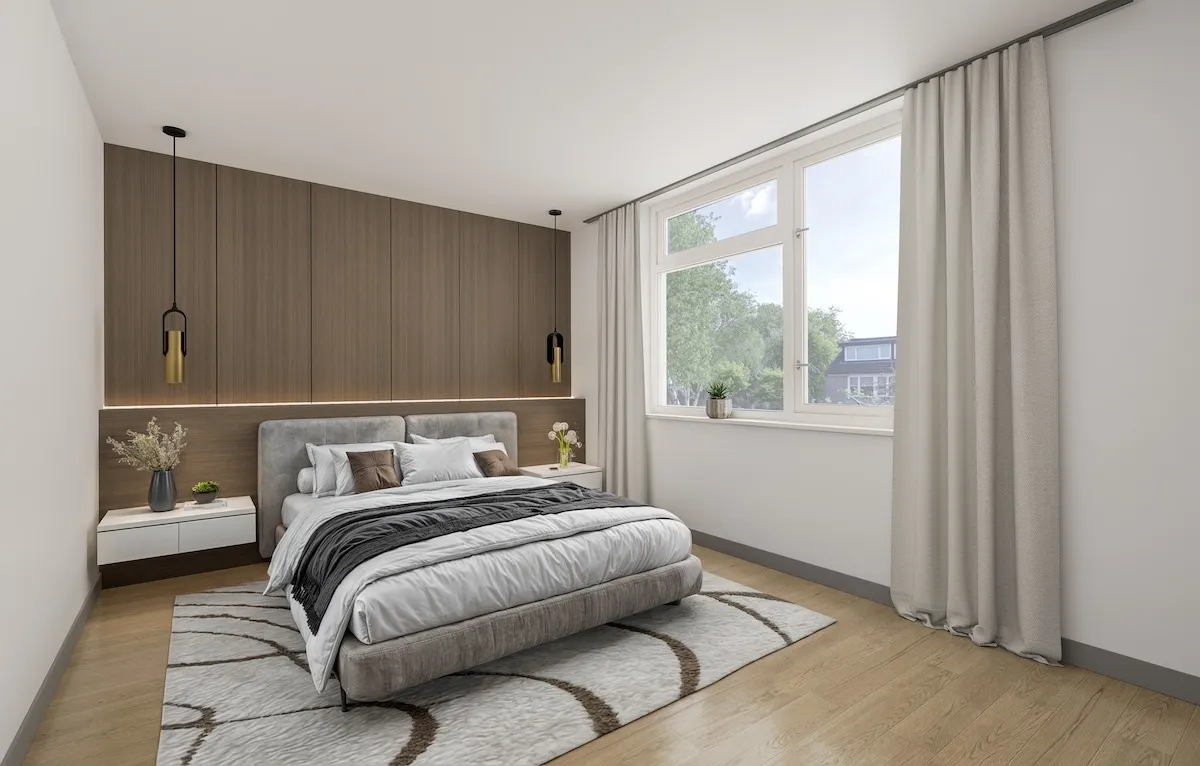



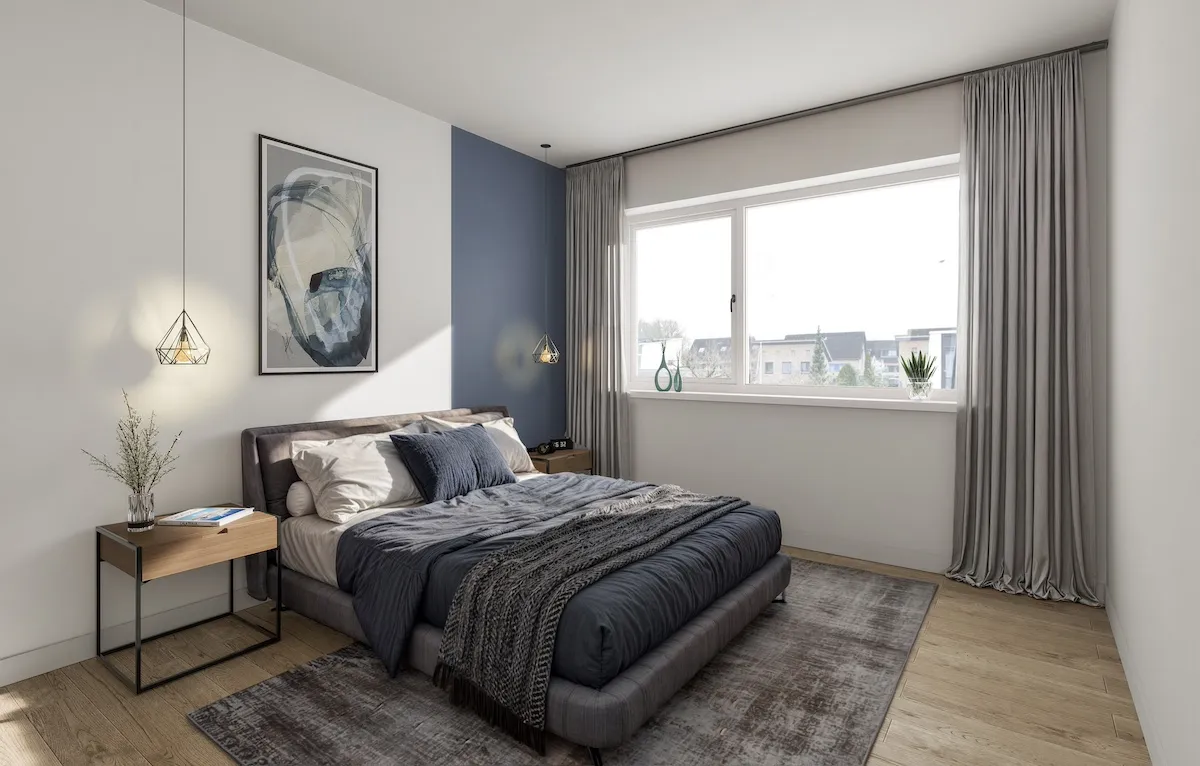
Conclusion
Choosing the right size for your master bedroom is crucial for a comfortable and practical living space that suits your needs. Consider your lifestyle, furniture needs, and budget to make informed decisions. Whether you prefer relaxing or spacious, aim for a size that fits your unique style and vision. Ultimately, prioritize comfort, functionality, and satisfaction in your dream master bedroom.
FAQ’s
What is the average size of a master bedroom in the USA?
The Average size of a master bedroom in the USA is about 14 feet by 16 feet.
What is the average size of a master bedroom and bathroom?
The average size of a master bedroom is usually 1.5x times bigger than that of a standard bedroom i.e. 14 feet by 16 feet. And, the average size of a master bathroom is anywhere from 40 to 100 square feet.
What are the factors to consider while choosing a master bedroom size?
When choosing an ideal bedroom size, consider factors like your lifestyle, furniture requirements, personal style preferences, home size, budgetary constraints, furniture measurements, traffic flow, embracing space, and future-proofing needs to ensure comfort, functionality, and satisfaction with your living space.




